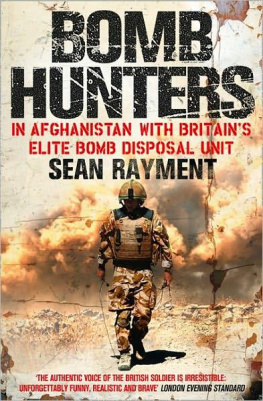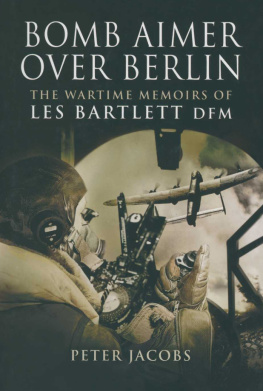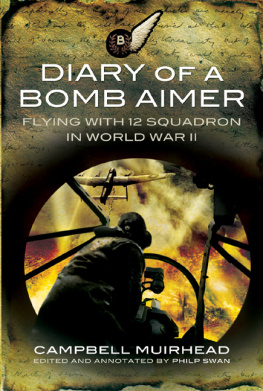The Wild Blue Yonder AND Beyond
Related Potomac Titles
Untold Valor: Forgotten Stories of American Bomber Crews
over Europe in World War IIRob Morris
B-17s Over Berlin: Personal Stories
from the 95th Bomb Group (H)Ian Hawkins, ed.
ROB MORRIS with IAN HAWKINS
The Wild Blue Yonder AND Beyond
The 95th Bomb Group in War and Peace

Copyright 2012 95th Bomb Group Memorial Foundation
Published in the United States by Potomac Books, Inc. All rights reserved. No part of this book may be reproduced in any manner whatsoever without written permission from the publisher, except in the case of brief quotations embodied in critical articles and reviews.
Library of Congress Cataloging-in-Publication Data
Morris, Rob, 1959
The wild blue yonder and beyond : the 95th Bomb Group in war and peace / Rob Morris with Ian Hawkins.
p. cm.
Includes bibliographical references and index.
ISBN 978-1-59797-712-8 (hbk. : alk. paper)
ISBN 978-1-59797-717-3 (electronic)
1. United States. Army Air Forces. Bomb Group (H), 95th.History. 2. World War, 19391945Aerial operations, American. 3. World War, 19391945Regimental historiesUnited States. 4. World War, 19391945CampaignsWestern Front. I. Hawkins, Ian. II. Title.
D790.25395th .M65 2012
940.544973-dc23
2012016070
Printed in the United States of America on acid-free paper that meets the American National Standards Institute Z39-48 Standard.
Potomac Books
22841 Quicksilver Drive
Dulles, Virginia 20166
First Edition
10 9 8 7 6 5 4 3 2 1
To the men and women of the 95th Bomb Group
and especially to
William E. Ed Charles, Leonard Herman,
Ellis Scripture, and William Dub Vandegriff
Contents
Preface
Puddles in the old runway reflect a leaden sky with small patches of blue. I am on the former air base of the 95th Bomb Group, Heavy, a group that once comprised thousands of men and hundreds of aircraft. Between 1943 and 1945, the 95ths B-17 Flying Fortresses and their crews thundered down this runway in rural Suffolk, England, destined for targets hundreds of miles away. These crews, and the thousands of ground-bound men who lived and worked in the small city that sprawled over hundreds of acres of fields and woods, now watch me from amber wheat fields and stands of leafy green trees. Some have their flight gear onlayers of clothing to protect them from bullets, flak, and the cold. The eyes in drawn and weary faces have circles under them. Others watch me in greasy coveralls, their ball caps tipped back on their heads. They grip a tool or a half-packed parachute. Cooks in aprons and clerks lean against trees, as if simply taking a short break from baking or typing. At the spot where the control tower once stood, the group leaders stand, binoculars raised to their eyes, watching me, watching the sky.
Down at the end, where the narrow country road cuts across the runway, I see the English residents of Horham, young children waiting for gum or ice cream, old men and women with canes. Its as if they are waiting to watch the planes take off, so that they can wave at the young American airmen who are on their way to bomb Hitlers Europe and wish them luck and a safe return. They know these young men, these Yanks, and have come to love them. And the Yanks love them back. The English residents of the small town of Horham and the American residents of the air base have become one community.
The stillness is eerie and disconcerting. Rain has turned the June countryside lush and green, and bright red poppies dance on a salty breeze blowing from the nearby North Sea. As I stand on the runway, I see older men walking slowly through the fields, some with canes and many donning worn A-2 leather flight jackets. Some have their wives at their sides and their middle-aged children. And finally, breaking the stillness, hundreds of grandchildren and great-grandchildren dash through the tall fields, laughing and playing.
Why have all these people come to meet me on this lonely runway in England thousands of miles from the United States? What are they doing here? I know why I have cometo write the history of the 95th Bomb Group. But what about them? As if on cue, everyone stops and stands in a large ragged circle around me. Slowly, from out near the woods, I see a lone figure approaching. Hes young, no more than nineteen or twenty, and hes decked out in a leather flight suit. He walks slowly and heavily in his over-sized fleece-lined flight boots, hauling his parachute pack. His oxygen mask hangs to one side, snapped to his leather flight helmet. He looks tiredvery tiredand as he gets closer I can see the deep lines in his face caused by the stress of flying missions and facing death.
He walks right up to me and drops his parachute pack down on the runway. He takes a moment to scan the thousands of people who now stand around us in the lonely field, and I follow his gaze. He looks back at me, focusing on me with eyes that have seen more than mine ever will. He raises his hand and places it gently but firmly on my shoulder.
Tell our story, he says. Please get it right.
Then he turns and walks away, followed by the other young men, by the old men, by the women and children and grandchildren. Soon, I am standing alone on the tarmac with only the wind as my companion. The immense weight of my undertaking crushes down upon me.
I must let the group tell the story through me. To do so, I have relied on hundreds, possibly over a thousand, individuals who in one way or another are part of the storythe men of the 95th, their wives, their children, the English who lived on and near the base. I have interviewed many personally, and others left me their contributions in the form of diaries, letters, taped interviews, and self-published memoirs. With these, I have relied on the work of those who came before me, not only each man and woman who kept a diary or a letter or a crinkled photograph, but also those who began, early on, compiling the history of the group and kept it alive and intact.
The 95th Bomb Group is a representative B-17 bomb group. If you read its history, you will get a good idea of the history of many American bomber groups stationed in East Anglia during World War II. For that reason, I hope anyone who wants to recapture and truly understand the entire bomb group experience reads this book. It is primarily a story of people. It is also a sad story at times, with instant death, years of captivity, and great mental and physical hardship as recurring themes. No interview hit me harder than talking with the widow of 95th pilot Fred Delbern, lost in the North Sea in 1943. If one could personify a broken heart and a lifetime of loss, Geri Delburn did that for me. It is a story of combat. It is a story of humor and funny situations. And it is a continuing story. The group still meets every year, both in the States and at Horham, though the number of original veterans is rapidly dwindling and soon no one will be left. Their children, grandchildren, and great-grandchildren have taken up the challenge of preserving history. This book is part of the groups goal of telling the story to those generations to come that will have no eyewitnesses to talk to. As you read its pages, listen carefully to what its characters tell you. For as you turn the pages, they will all come alive, and you will see them, as I did.
Rarely does a day go by that I do not see the face of the young airman who walked up to me on the runway. I take his charge seriously. His charge to me is sacred. Tell our story. Get it right. I hope I have done that.
Next page










